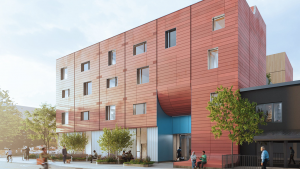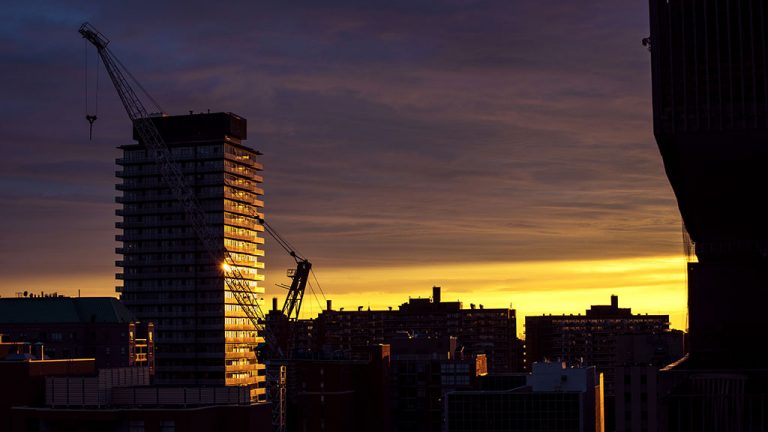Here’s a scenario: A low-rise building has installed PV arrays on the rooftop at significant expense in order to generate as much power and to be as close to net-zero energy as possible. Other upgrades include improved levels of insulation in the walls, triple pane windows, even a rainwater reclamation system.
Then, on the property next door, a tall condominium is built as part of new municipal density policies. As a result, the PV arrays installed on the adjacent low-rise building will be shaded for much of the day.
Does the owner of the first building have any legal recourse to protect their “right to light?”
It’s a question that in court in the United Kingdom. There, a developer did not give consideration to his neighbour’s PV arrays and a local council had similarly overlooked the implication of the new building. The High Court overturned the planning consent previously granted.
In Canada, however, there is little regulatory protection for existing PV arrays, Edward Lynde and Robert Iaccino, partners with Fasken Martineau DuMoulin LLP, told the Daily Commercial News. Courts have dismissed past claims for right to light due to the inability to acquire or determine any required easement.
Owners of real property may have certain rights in relation to their property, Lynde and Iaccino said, however there are limitations. The right to light is a prime example, despite green certifications such as LEED that reward self-sustainability in both residential and commercial buildings.
Despite what could be the significant financial implications of a commercial claim, Lynde and Iaccino said a strong legal basis to frame a claim for right to light does not exist. Nevertheless, they do suggest two potential arguments and rebuttals.
“First, an aggrieved owner could potentially argue that it has easement rights to the right to light. However, the requirements necessary for a finding of an easement can be difficult to prove, in particular easements by prescription, which are established by historical conduct. Not every interference will justify the intervention of the court, and the interference must be material and substantial and render the premises less comfortable and enjoyable.
“Second, an aggrieved owner could potentially argue that the new building constitutes a nuisance, which can be based upon physical damage to the land or inconvenience or interference with enjoyment of the land.”
That could be countered by the opposing party on the basis that there is “reasonableness and utility for the construction in question.”
“Even then, presuming an aggrieved owner is successful in its argument regarding right to light, the question then becomes: What relief will be awarded and what remedies will be available?” they ask.
However, times are changing. Increased urban density and the need to protect energy generation systems such as PV arrays, even on a structure-by-structure basis, will require taking the interests of all parties into consideration.
That was addressed by Toronto Councillor Joe Mihevc in a back in 2018. He suggested a right to light protocol to protect current building owners.
“Residential solar policy is an underdeveloped policy area and the city needs to understand how it will meet competing interests of new developments and neighbourhood installations, particularly where solar installations may be impacted negatively.”
Jordan Adler, legal counsel for Empire Communities, told the Daily Commercial News there is no common law protection for “natural right to lateral light.”
However, he said as a result of shadow impact studies, some condo development projects in Ontario have been rejected on the basis of casting too large a shadow on neighbouring adjacent properties.
More needs to be done, said Lynde and Iaccino.
“We can envisage the not-so-distant future where both commercial and residential buildings could utilize renewable energy, including solar energy, as their primary source of energy. Accordingly, laws need to be enacted to ensure access to light to ensure access to sustainable and renewable energy that is clean and green. Without protection through law or the planning process, worthwhile initiatives might never occur.”
John Bleasby is a Coldwater, Ont.-based freelance writer. Send comments and Legal Notes column ideas to editor@dailycommercialnews.com.











Recent Comments
comments for this post are closed